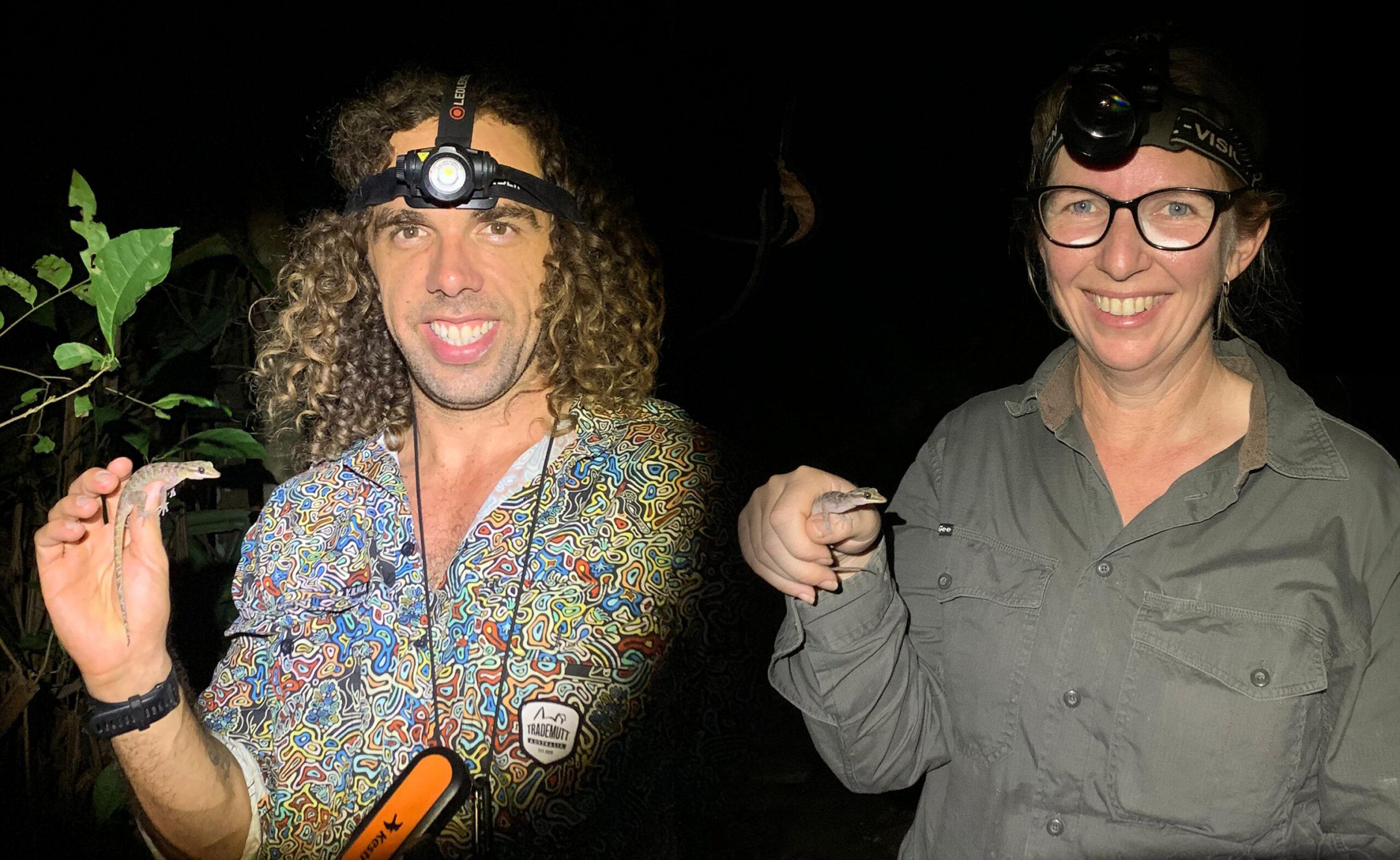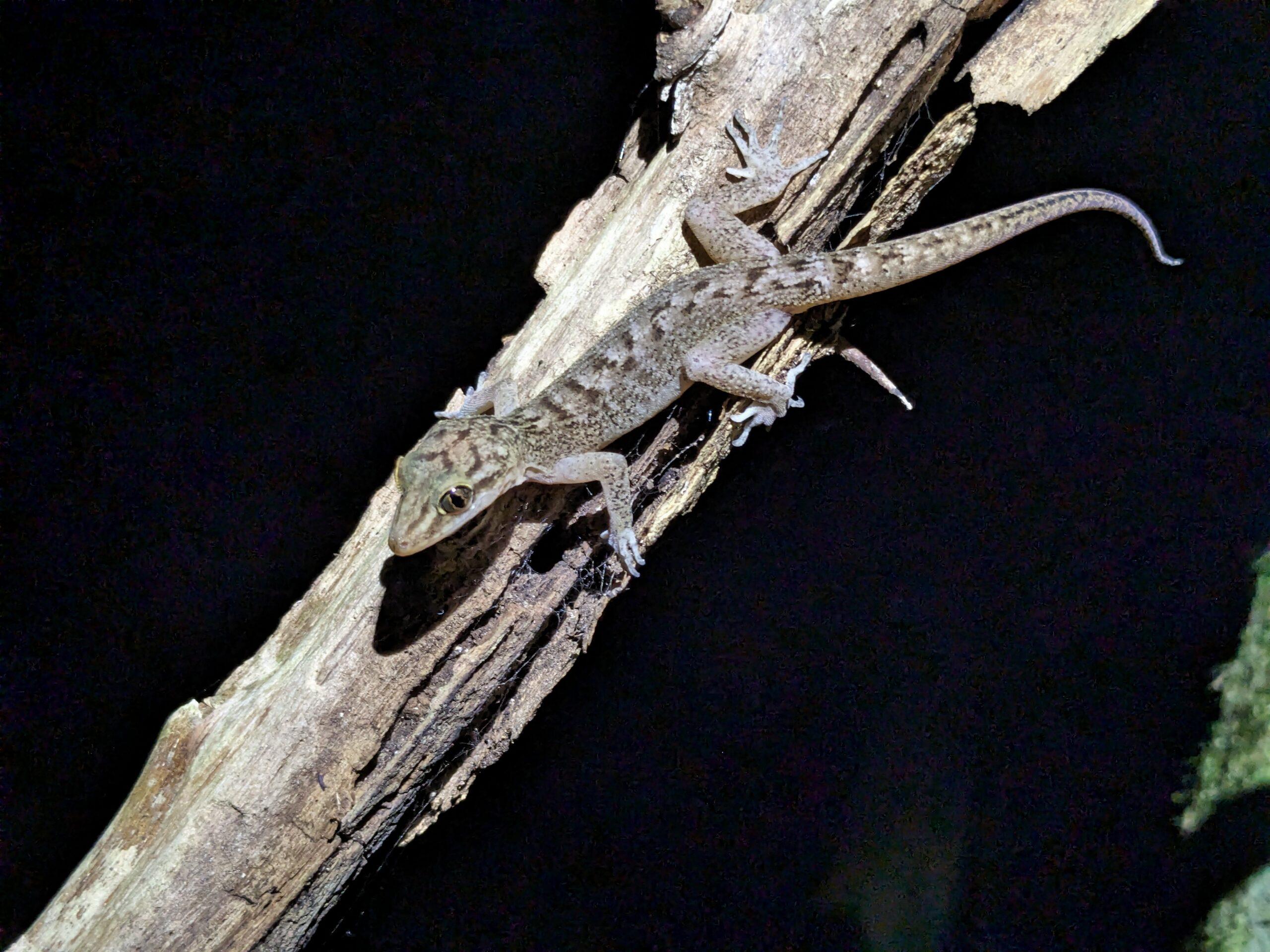3 July 2024
Scientists have finished their first field trip to Christmas Island to survey the endangered Christmas Island giant gecko – the last native reptile found in the wild on the remote island.
Lead researcher Dr JP Emery (University of Southern Queensland) recently spent 6 weeks on the Australian territory of Christmas Island. He was working alongside Julie Trezise (University of New England), a PhD candidate who is lucky enough to live and work on the Indian Ocean island.
Together, they are trying to better understand the Christmas Island giant gecko (Cyrtodactylus sadleiri).
Where once the island was home to 5 reptile species, the giant gecko is now the only endemic reptile species living in the wild (not in captivity) on the island. Other species have become locally extinct because of habitat changes and introduced pests and predators.

Dr JP Emery and PhD candidate Julie Trezise were both delighted to find the Christmas Island giant gecko at many sites during their recent field trip.
The project will mark the first widespread, comprehensive survey of Christmas Island for the endangered gecko.
This kicked off on recently, as JP and Julie worked through some less-than-favourable conditions!
“Despite receiving more than 900 mm of rain in less than 1 week, we surveyed nearly 50 monitoring sites,” said JP.
Through the pouring rain, they undertook two full rounds of preliminary surveys, searching for the endangered species.
The preliminary results are promising.
“We found giant geckos at many sites … along with many other critters like large robber crabs that were interested in ‘helping’ out or simply interested in what we were doing,” laughed JP.
“It was exciting to see a large number of giant geckos surviving in this harsh environment and quite surprising how fast they are,” said Julie.
“We saw a giant gecko sprint straight over one of its predators, a giant centipede, as it headed up a tree trunk. These preliminary surveys have provoked some great conversations and questions which will shape some of our future research.”

Christmas Island giant geckos are the only native reptile still found in the wild on Christmas Island. Photo: JP Emery.
JP and Julie also undertook microhabitat vegetation surveys at 35 sites.
This involves walking transects and collecting measurements, such as canopy cover, shrub cover, pinnacle (small towers of limestone) cover and other elements.
“We want to see how small-scale variables, like the presence of Epiphytes or pinnacles, might influence the presence of giant geckos.”
Ultimately, the project aims to understand the gecko’s population abundance, density, spatial distribution, ecology, habitat preferences, predator interactions and genetic diversity.
For now, the two scientists will analyse the pilot study results and assemble a schedule for the upcoming trip in September/October.
“It was an exciting trip,” said JP. “I can’t wait to get back up there in September — that’s when we’ll undertake the next round of Island-wide surveys looking for the giant gecko.”

Scientists undertook microhabitat vegetation surveys at 35 sites over Christmas Island. This data allows them to see if the endangered geckos favour certain habitats. Photo: JP Emery.
Want to know more about the Resilient Landscapes Hub's activities and our research into practical solutions to environmental problems? Stay informed about activities, research, publications, events and more through the Hub newsletter.